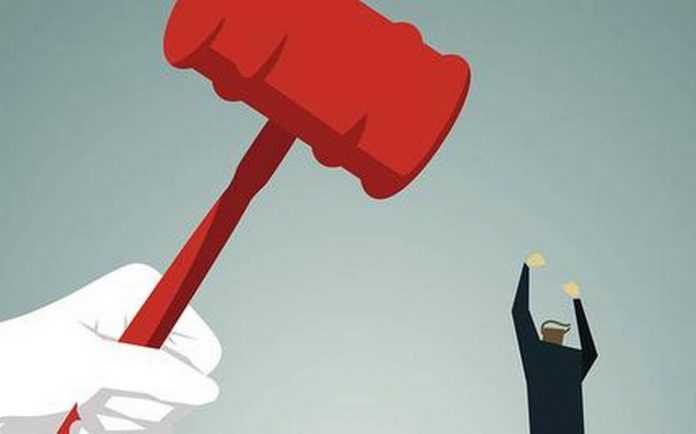This article is written by Shivam Gupta, a student of Maharashtra National Law University Aurangabad. This article seeks to highlight the importance of Article 142 and how it can establish its correlation with judicial activism and judicial restraint.
Table of Contents
Introduction
Article 142 can be defined as the Supreme Court’s orders and decrees being carried out in the exercise of its jurisdiction in such a way that complete justice can be done. The Federal Court had no apparatus for carrying out its decisions under the Government of India Act, 1935. It could only issue a declaratory judgement in the exercise of its original jurisdiction. If the Federal Court approved an appeal in the exercise of its appellate authority, it was required to remand the matter to the court from which the appeal was filed, together with a declaration of the judgement, decree, or order to be substituted for the judgement, decree, or order appealed against. Under the current Constitution, there is no such restriction.
Scope of powers under Article 142
In the exercise of its authority, the Supreme Court may issue any order required to provide complete justice in the case at hand. Even legislation will not be able to limit the court’s power. In the matter of Chandrakant Patil & ors. v. State Through CBI (1998), The Supreme Court of India ruled that exercising Article 142 is only subject to two conditions:
1. It can only be used if the court is otherwise exercising its jurisdiction,
2. The case or dispute pending before the Supreme Court must require the court’s order for complete justice to be served.
The Supreme Court of India held in Supreme Court Bar Association v. Union of India (1998), that powers provided under Article 142 are supplementary, complementary, and residuary to the powers particularly bestowed on the Supreme Court, which may very well be exercised as long as it is equitable and just to use it, and also, in particular, to make sure the strict adherence of due process of law, to do complete justice between both the parties while administering justice as per law. Furthermore, the Supreme Court of India stated in DDA v. Skipper Construction Co. (P) Ltd.(1996) that it is preferable to leave Article 142’s power unregistered and undefined so that it may be sculpted to fit the circumstances in the given case. The Supreme Court ruled in the Union of India (UOI) v. State of Maharashtra and Ors.(2019) that Article 142 cannot be used to intrude on legislative territory which is one of the limitations while applying Article 142 to any case.
Judicial activism
When the Constitutional Court gives wider meaning to various expressions written in the constitution or any statute according to the demand of the situation, it can be considered as judicial activism. Judicial activism is against the process where the Constitutional Courts just need to apply the pre-existing principles and legal rules to a given case and there is not much scope of judicial interpretation.
In the case of Pravasi Bhalai Sangathan v. Union of India (UOI) and Ors.(2014), the Supreme Court opined that the court cannot redefine, rewrite, or recast the statute because it lacks the authority to legislate. The courts have not been given the authority to legislate. But, in recent years, judicial activism by India’s upper courts has piqued popular interest. Even if judicial activism is explained as just the active interpretation of an existing provision to improve the effectiveness of legislation for social upliftment in conformity with the constitution, courts have and should always pursue in a way to meet the constitutional expectations of socio-economic justice under its banner.
In India, there are two types of Constitutional Courts, the High Court and the Supreme Court. According to Article 141 of the Constitution of India, all the judgments of the Supreme Court are binding upon all courts within the territory of India unless they are overruled by the Supreme Court itself or the legislature has passed a law against that judgement. All the judgments of the High Courts are also binding upon all the lower courts which come under the jurisdiction of that High Court. Therefore judicial activism should be exercised by the constitutional courts very diligently as their rulings act as a law.
Exemplary cases of judicial activism and Article 142
From time to time whenever it was noticed that several beneficiary provisions were being misused by unworthy individuals, denying the genuine claims of eligible individuals, the Supreme Court issued numerous guidelines/directions to avoid abuse and fraud on the statutes and the Constitution. Some of these significant cases are –
The State of Tamilnadu and Ors. v. K. Balu and Ors. (2017)
This case was about the presence of liquor vends on national and state highways across the country. The Supreme Court issued certain directions in this case about granting licences related to liquor sales along national and state highways all over India. One of the major directions given by the Supreme Court is that all states and union territories are prohibited to grant licenses for liquor sale along state and national highways. In this case, the Supreme Court issued the directions under the ambit of Article 142 to do complete justice. The reasoning behind issuing such directions is that Section 185 of the Motor Vehicles Act, 1988 makes the intention of the parliament clear that a zero-tolerance policy should be followed towards driving if any person is under the influence of alcohol. This case is the perfect illustration of how a constitutional court can use judicial activism.
In Re: Guidelines for Court Functioning through Video Conferencing during COVID-19 Pandemic (2020)
This case is another remarkable example of both judicial activism and doing complete justice under Article 142. In this case, the three-judge bench of the Supreme Court took the suo moto cognizance of the functioning of the judiciary during the COVID–19 pandemic times. The Supreme Court issued directions regarding the functioning of courts through virtual mode. These directions were issued under the ambit of Article 142. This shows the commitment of the judicial system towards the dispensation of justice and also a step further to achieve the objectives enshrined in the Preamble of India.
Justice K.S. Puttaswamy and Ors. v. Union of India (UOI) and Ors. (2018)
In this case, one of the contentions made was that to protect the right to privacy and to implement the decision of the Supreme Court in the nine judges bench in Justice K.S. Puttaswamy and Anr. v. Union of India (UOI) and Ors.(2017) (Also popularly known as “Right to Privacy” case), the deficiencies in the Aadhaar (Targeted Delivery of Financial and Other Subsidies, Benefits and Services) Act, 2016 should be removed and for the same, the Supreme Court should issue guidelines under Article 142. On this Supreme Court under Article 142 directed the Union government to come up with the fresh legislation regarding aadhaar as the Aadhaar Act, 2016 suffers from various constitutional infirmities and if the Union government failed to do so within one year then all the data collected related to aadhaar has to be destroyed. After the judgement, the Union government came up with the amended version of the Aadhaar Act in 2019. This judgement is the perfect blend of judicial activism and doing complete justice under Article 142.
Judicial restraint
Judicial restraint can be defined as when the court has to put a restrain upon itself to perform the functions of the executive or the legislature. In India there are three organs of government i.e., legislature, executive and judiciary and functions of all the three organs are different. All three organs come under the ambit of the doctrine of separation of powers. Although the idea of separation of powers is not acknowledged in its full rigour in the Constitution, the Constitution framers have precisely outlined the tasks of various State organs.
The legislature, executive and judiciary should operate within their constitutionally defined areas. No organ can take over the duties of another. The Constitution relies on each of these organs’ judgement to function and use their discretion while scrupulously adhering to the procedures laid out in the Constitution. Each of these organs needs to be strong and independent for it to work properly.
All the powers related to finance and arm forces rest with the legislature and the executive organs of the state. Although the judiciary has no jurisdiction over the arm forces or the treasury, it does have the ability to guarantee that the two primary organs of the state operate within constitutional bounds. It acts as a democratic watchdog. A judicial review is a vital tool for limiting the legislature’s and executives’ unconstitutional exploitation of authority. The notion of social and economic justice has been included in the widening purview of judicial review. While the legislative and executive are subject to judicial scrutiny, the only check that the constitutional court can impose on their powers is of the self-imposed practice of judicial restraint.
Jurisprudence behind judicial restraint
Asif Hameed and Ors. v. State of Jammu and Kashmir and Ors. (1989)
In this case, the Supreme Court opined that when any action of the state is challenged, the court’s role is to assess the action in light of the law and determine whether the executive or the legislature has operated within the limits set by the Constitution; if not, the court must overturn the action. The court must do so while remaining within its self-imposed boundaries. The court renders a decision based on the actions of a government branch. The court is not an appellate authority when it exercises judicial review of administrative action. The Constitution forbids the court from directing or advising the executive on policy concerns, or from preaching on any issue that falls within the domain of the legislative or executive, as long as these organs do not exceed their constitutional or statutory authority.

Institute of Chartered Accountants of India v. Price Waterhouse and Anr. (1997)
In this case, the three-Judge Bench of the Supreme Court observed that judges should not imply that they are acting as legislators only to show off their judicial power. They must keep in mind that there is a narrow line that divides adjudication from policymaking. It is a line that should not be breached.
Madhu Kishwar and Ors. v. State of Bihar and Ors. (1996)
In this case, the Supreme Court observed that the court is not completely able to deal with the nuances and complexity of the legislative issues and it can only offer focus and guidance on State policy on a matter to help achieve the objective. Therefore, the court can only play a catalytic role in resolving people’s social and economic issues. The court must put limits on its self-motion sometimes, which is referred to in legal jargon as judicial self-restraint. Courts must not legislate or undertake executive responsibilities.
Union of India v. Association for Democratic Reforms and Anr. (2002)
In this case, the Supreme Court observed that it has no authority to amend the Act or the statutory provisions. The Act and the Rules must be amended by Parliament and also no directive can be issued that violates the Act or the Rules. But, if the Act or Rules are quiet on a given issue and the authority enforcing it has constitutional or statutory jurisdiction to do so, the Court can make orders or directions on the issue to fill the gap until a proper act is passed.
Conclusion
From the above analysis, it is clear that powers of the Supreme Court under Article 142 are undefined and can be exercised when it fulfils the conditions. Article 142 gives the Supreme Court the power to exercise judicial activism whenever required and do complete justice and in many cases, the Supreme Court has done that. But the Supreme Court also exercised judicial restraint in many cases where the issue should be resolved by the legislature or the executive. The judge should know when to exercise judicial activism and when to exercise judicial restraint. This ability should be developed by every judge in themselves because Supreme Court judgements act as a law in India.
The Supreme Court of India has wide jurisdiction under the Indian Constitution. When a constitutional functionary is given authority, it is always to be interpreted as a responsibility by the functionary; laymen can view it as power and when the functionary is a Supreme Court judge, he must be more cautious, otherwise, he/she might be swayed by emotion or bias.
References
- https://www.legislation.gov.uk/ukpga/1935/2/pdfs/ukpga_19350002_en.pdf
- https://legislative.gov.in/sites/default/files/A1988-59.pdf
- https://uidai.gov.in/images/targeted_delivery_of_financial_and_other_subsidies_benefits_and_services_13072016.pdf
- https://uidai.gov.in/images/Aadhaar_Act_2016_as_amended.pdf
- https://core.ac.uk/download/pdf/233188475.pdf
- https://jcil.lsyndicate.com/wp-content/uploads/2021/04/Judicial-Activism-The-COVID-19-Impact-Anjali-Karmakar.pdf
- http://www.supremecourtcases.com/index2.php?option=com_content&itemid=5&do_pdf=1&id=312
LawSikho has created a telegram group for exchanging legal knowledge, referrals and various opportunities. You can click on this link and join:
https://t.me/joinchat/L9vr7LmS9pJjYTQ9
Follow us on Instagram and subscribe to our YouTube channel for more amazing legal content.
 Serato DJ Crack 2025Serato DJ PRO Crack
Serato DJ Crack 2025Serato DJ PRO Crack










 Allow notifications
Allow notifications



